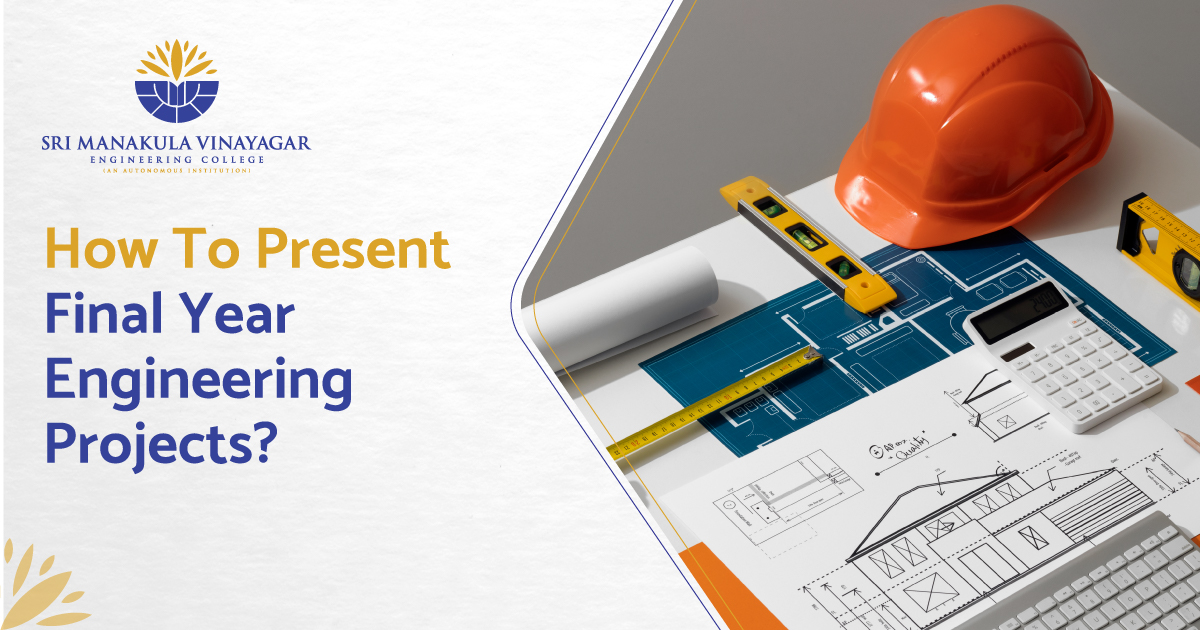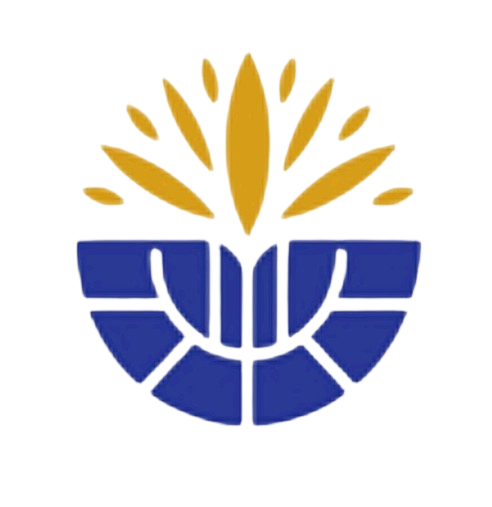What’s the one moment that stands between your college life and your professional career? For engineering students, it’s the final presentation of their final year engineering projects – the moment of truth that sums up four years of learning, exploration, teamwork, and innovation.
But how do you turn months of research, coding, testing, and problem solving into a presentation that wows your professors, peers, and external reviewers? In this blog, we’ll explore exactly how to present your final year engineering projects with confidence, clarity, and creativity.
Why Project Presentation Matters
Your final year engineering projects are more than academic exercises. They’re a proof of concept for your skills, teamwork, research ability, and real world application. The presentation focuses on showcasing results and telling a compelling story. It’s your chance to:
- Show domain expertise
- Demonstrate project viability
- Get feedback from experts.
- Influence potential recruiters
- Earn valuable academic grades.
Remember, a good project presented poorly can lose impact, while an average project presented smartly can win hearts and minds.
Before You Present: Know Your Project Inside Out
Before you even open PowerPoint, ensure that every team member is on the same page. Each person should be able to explain the:
- Problem statement
- Objectives
- Technology stack
- Architecture
- Results and challenges
You should rehearse as if someone might randomly ask any of you to explain a specific block diagram or code snippet. The confidence you show comes from preparation. Also, revisit the documentation. The written report you submit and the presentation must align. Discrepancies raise red flags.
Structure of a Winning Presentation
Here’s a tried and tested structure that works across all domains of final year engineering projects:
- Title Slide: Project name, team members, guide, department.
- Introduction: Background of the problem, motivation.
- Problem Statement: The specific issue your project addresses.
- Objectives: What you aimed to achieve.
- Methodology/Architecture: Flowcharts, system architecture, database schema, etc.
- Implementation: Tools, technologies and coding frameworks used.
- Testing and Results: Graphs, screenshots, performance data.
- Challenges and Solutions: What didn’t work and how did you solve it?
- Future Scope: How your work can be extended or scaled.
- Conclusion: Summary and takeaways.
- Q & A Slide
- Thank You Slide
Stick to the point. Use bullet points over paragraphs. Practice pacing; each section should take 1-2 minutes during a 15 minute slot.
Slide Deck: Design and Visuals
A clean slide deck speaks volumes. Your final year engineering projects deserve a visual representation that is:
- Minimal
- Consistent in font and colour
- Includes only key information
- Uses diagrams wherever possible
Dos:
- Use high-resolution images
- Label all diagrams clearly
- Choose a font size above 24 pt
- Stick to a colour palette (blue-grey or black-white work best)
Don’ts:
- Overuse of animations
- Paragraphs of text
- Cluttered tables and code dumps
Use tools like Canva, PowerPoint Designer, or LaTeX (Beamer) for clean templates.
Effective Communication Techniques
Even the most brilliant final year engineering projects can fall flat without clear communication. Here are the key elements:
- Start Strong: Begin with a relatable example or stat. Grab attention.
- Simplify Jargon: Explain any tech terms in layman’s language.
- Use Real world Analogies: Explaining a neural network? Compare it to the human brain.
- Flow Matters: Keep the narrative seamless. One slide should logically lead to the next.
- Time Your Talk: Use a timer while practising. Stick to the assigned time.
And most importantly: rehearse. As a team, simulate the entire presentation at least three times, ideally in front of your mentor or juniors.
Demonstrating the Working Model
Nothing excites a panel more than a project that works. Here’s how to show your prototype or code in action:
- Test in the Actual Environment: For example, if your model uses sensors, test it in a real setting.
- Have Backups: Always carry pre-recorded videos or screenshots in case of tech failure.
- Use Live Data (if possible): Showing real time responses to inputs is very powerful.
- Narrate While Demoing: Don’t stay silent. Explain what’s happening during the demo.
For software projects, set up a local server if internet dependency is risky. For hardware, check power supplies, backup batteries, and wires.
Handling Questions with Confidence
Panellists ask questions to test your understanding, not to catch you off guard. To handle Q&A:
- Be Honest: If you don’t know something, say, “That’s a great question. I’ll explore it further.”
- Distribute Questions: Every team member should answer at least one.
- Repeat the Question: It helps you buy time and shows clarity.
- Stay Calm: Don’t get defensive or over explain.
Expect questions like:
- Why did you choose this method over others?
- How scalable is this system?
- What would you improve if given more time?
Practice with your guide or peers who can simulate panel behaviour.
Dress Code, Body Language, and Team Coordination
Professionalism is about presence. How you appear and behave as a team will be remembered.
Dress Code:
- Boys: Formal shirt, pants, polished shoes. Avoid sneakers.
- Girls: Salwar suits, sarees, or formal wear. Minimal makeup.
Body Language:
- Stand straight
- Don’t fidget
- Use hand gestures moderately
- Make eye contact with the audience, not the slides
Team Coordination:
- Use a signal system to switch speakers smoothly
- Avoid interrupting each other
- Arrange the laptop/projector connection in advance
Common Mistakes to Avoid
Even bright students falter due to these avoidable errors in their final year engineering project presentations:
- Reading from slides
- Technical terms without explanation
- Poor time management
- Unprepared Q&A
- Overdependence on one team member
- No working demo or video backup
- Last minute rehearsals
- Not testing the presentation setup
One golden rule: Don’t try to fake what you don’t know. It shows.
Final Checklist
Before the big day, here’s a master checklist for your final year engineering projects presentation:
- Slides are complete and backed up
- Presentation rehearsed (at least 3 times)
- Working model tested
- Video backup ready
- Fonts readable, diagrams clear
- Dress code ready
- Team roles and speaking order fixed
- Internet connectivity or power supply arranged
- A4 sheet with summary (optional)
- Questions rehearsed
Tip: Reach the venue at least 30 minutes early to set up and calm your nerves.
College Support: SMVEC’s Role in Guiding Projects
At Sri Manakula Vinayagar Engineering College (SMVEC), the journey of final year engineering projects is a culmination of the learning experience. SMVEC promotes innovation through:
- Department specific project mentorship
- Weekly project review checkpoints
- Dedicated labs and tech infrastructure
- Expert talks and workshops
- Strong alumni support network
The faculty plays a vital role in guiding project selection, reviewing technical implementation, and helping teams present confidently. Our students have consistently earned accolades at tech symposiums and innovation fests, owing to their thorough preparation and institutional support.
So if you’re an SMVEC student, leverage your mentors, utilise the college resources, and take pride in showcasing your innovation.
Final Thoughts:
Presenting your final year engineering projects is your time to shine. It’s the fruit of academic rigour, creativity, teamwork, and problem solving. Think of it not as a task but as a starting point for your professional career.
If you ace the demo or stumble slightly, your ability to communicate, adapt, and show ownership will leave a lasting impression. And that’s what real engineering is about – figuring it out together. To all the future engineers, remember: your project is a story worth telling. So step up, show up, and tell it like only you can.
FAQs:
1) What are the best tips for presenting final year engineering projects confidently?
Practice regularly, know your project inside out, use a clean slide design, and be ready for questions. Confidence comes from preparation and clarity.
2) How long should a final year engineering project presentation typically last?
Most colleges allot 10 to 15 minutes for presentations, followed by a 5 minute Q&A. It’s important to time each section and rehearse accordingly.
3) Do I need to show a working model during my final year project presentation?
Yes, a working demo significantly boosts credibility. If a live demonstration isn’t feasible, carry a pre-recorded video or simulation screenshots.
4) What tools can I use to create impactful engineering project presentation slides?
PowerPoint, Google Slides, Canva, and Prezi are popular tools. Choose templates that are clean and ensure diagrams are well labelled.
5) What common mistakes should I avoid while presenting my final year engineering project?
Avoid reading from slides, overusing technical jargon, poor time management, lack of teamwork coordination, and skipping Q&A preparation.



